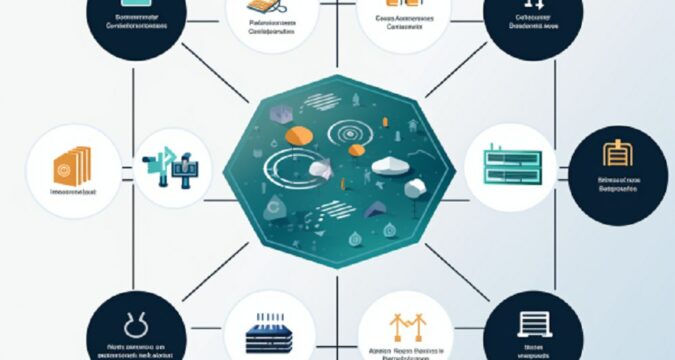
Bitcoin Core is the basic application software that makes the Bitcoin network operate in a distributed and virtually invulnerable mode. It supports transactions, other governance, and protection of the blockchain and assists in maintaining all policies of the Bitcoin network.
Now, let’s learn what Bitcoin Core does to help the network work and why it is so important for the global system to work.
What is Bitcoin Core?
Bitcoin Core is the first and only application that makes the Bitcoin blockchain work. It acts as Bitcoin’s ” head,” forbidding other commands, and everyone in the network follows its demands.
We could regard Bitcoin as an empire founded by everyone. BTC’s computer network dominates efficiently. It doesn’t have a chief, corporation, or regime. It has no control center.
With Bitcoin Core, a person’s device becomes part of the network by functioning as a node that downloads and saves data from the blockchain. Users of Bitcoin Core are part of the ecosystem as they now participate in validating new transactions and blocks.
How Does it Promote Decentralization?
Bitcoin Core’s goal is the decentralization of the Bitcoin network. This structure allows thousands of people to own and control their digital currencies without any third party acting as a central authority.
Different locations in the world assist in doing so by running thousands of Bitcoin Core nodes, which audit all the transactions taking place. The nodes cannot be corrupted as they are spread out, and each node runs according to a fixed set of rules.
This, along with the consensus rules, is why BTC is sometimes referred to as ‘trustless.’ By using Bitcoin Core, users can contribute to the security of the network, guarding it against problems such as double-spending.
Main Functions of Bitcoin Core
There are essential features necessary for the Bitcoin core to be integrated into the network.
Transaction Validation
After a transaction is made in the network, it is disseminated to other nodes around the globe. The Bitcoin Core then ensures that nodes have enough money before they approve the transaction and that a valid signature exists so that transactions cannot be invalidated.
Nodes also receive newly mined blocks and check that they correspond to the consensus rules on the BTC network, such as the block’s maximum size and cryptographic difficulty.
Wallet Functionality
The built-in wallet included within the Bitcoin Core allows users to send, receive, and save their BTCs. Users of this wallet have self-custody; they have their private keys—the secret credentials unlocking access to their BTCs.
The wallet also provides extra security features that enable multi-signature transactions, which require the consent of many users before payments are approved. This is especially impressive for a user or an organization that holds an ample amount of BTC.
Network Participation
Vital activities conducted by users include validating and transmitting transactions. Since every node contains and updates the complete history of past transactions in the blockchain, none of them would ever be replaced or deleted, ensuring openness and trust in the system.
Running a Bitcoin Core Node
Running a Bitcoin Core node is the best way to participate in the Bitcoin network and make contributions. Here is how to do it.
Check Requirements: It is crucial to have the appropriate configurations, including the current operating system version, 7GB of storage space, 2GB of RAM, and appropriate internet speed.
Download and Install Bitcoin Core: Obtain the most recent version from the official website and install it in a safe location.
Sync with the Blockchain: It will most likely take some hours, but it may take longer, depending on the internet speed. So, this core will use the time to start downloading the entire blockchain.
Configure Settings and Monitor: Ensure that port 8333 is open and your connection to the node is maintained.
Though running a node costs bandwidth and storage, it allows you to help maintain Bitcoin’s decentralization and security.
Throughout the years, the core community has made some major updates, notably the Segregated Witness (SegWit) and Taproot. These developments were voters’ decisions, proving how community-based governance affects the development of the Bitcoin Core.
The Future
The focus of the Bitcoin Core developers will likely be geared towards scalability, privacy, and security. Currently, transaction times and fees take longer and are higher in comparison to other networks; this needs to improve over time with updates.
Safety continues to be crucial, particularly as new risks (such as quantum computing) arise, which may have negative ramifications for BTC’s security.
Final Thoughts
What stands out in Bitcoin Core and its community is the motivation to invent, the courage to contradict what the past held, and the ambition to make the world a better place. Bitcoin Core allows the world to achieve a new level of decentralization—a level that goes beyond anything imaginable. Money cannot control this level because it would be useless and irrelevant.


